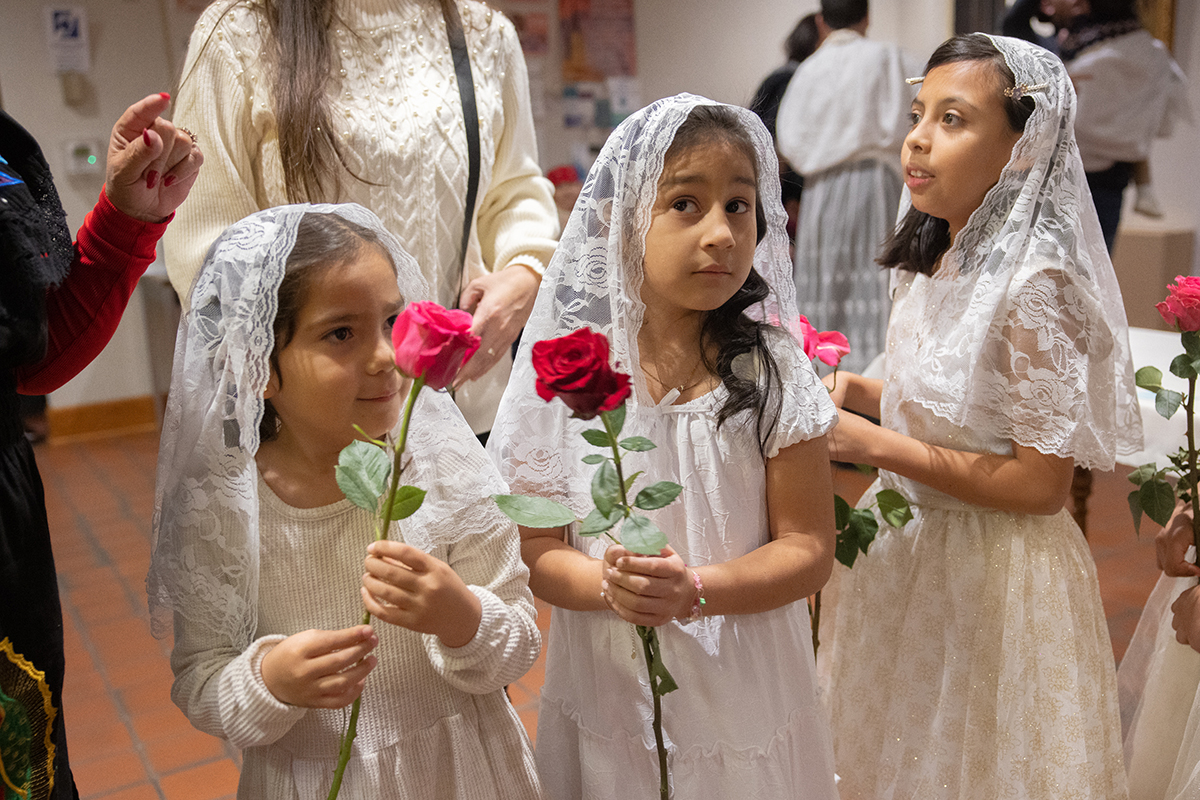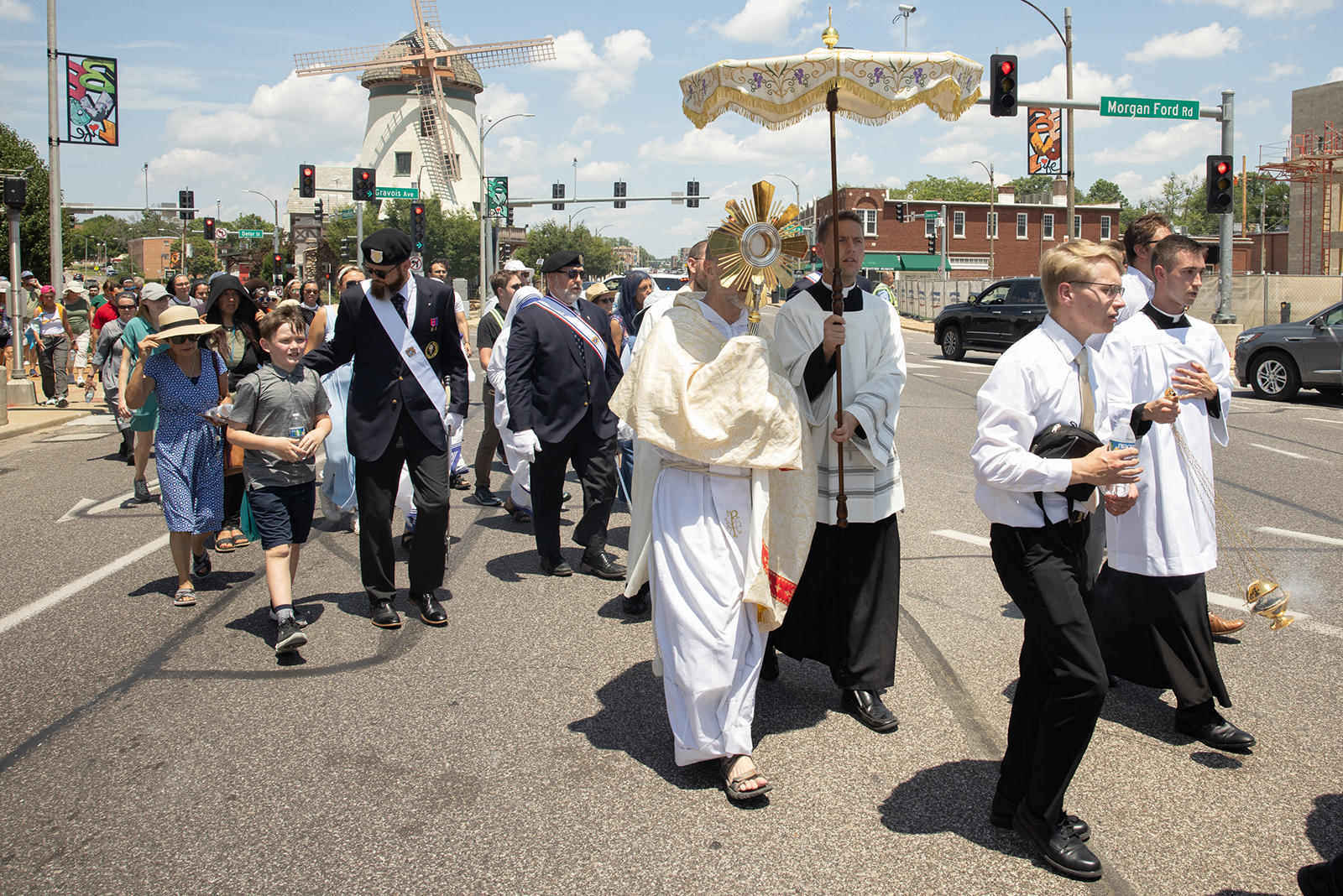St. Joseph Educational Ministries to provide lay leadership in sponsorship of several Catholic institutions in St. Louis
St. Joseph Educational Ministries is a lay-led sponsorship model recognized by the Vatican
In 1808, after the French Revolution, Mother St. John Fontbonne refounded the Congregation of the Sisters of St. Joseph in France. At the invitation of Bishop Joseph Rosati, she sent six sisters to St. Louis in 1836, establishing the congregation’s roots at

Carondelet and beginning a long ministry of education here, with a specific mission to “serve the dear neighbor without distinction.”
After 185 years in the St. Louis area and Midwest, the St. Louis Province of the Sisters of St. Joseph of Carondelet are transferring sponsorship of their five educational institutions — including St. Joseph Institute for the Deaf, Fontbonne University and St. Joseph’s Academy — to a newly established model of Catholic sponsorship called St. Joseph Educational Ministries (SJEM).
SJEM is considered a ministerial public juridic person, a status that has been granted by the Vatican that enables laypeople to take on the sponsorship role traditionally held by religious. It is believed to be the first pontifical ministerial public juridic person for education in the United States, although the concept already exists within Catholic health care. (See related.)
The group will serve as a bridge between the schools and the Church, with laypeople taking on the sponsorship role alongside Sisters of St. Joseph. The group will take responsibility for promoting Catholic identity and the sisters’ charism within these schools.
“Many religious-sponsored schools are looking at how do we sustain our identity as religious schools within a diocese,” said Sister Amy Hereford, a canon lawyer and member of the St. Louis Province leadership team. “We talk about loving the dear neighbor and connecting neighbor with neighbor, and neighbor with God.”

Sister Amy said establishing the new structure will ensure the schools remain Catholic and true to the sisters’ values. While very few sisters teach in these schools anymore, they remain active serving as board members, employees, volunteers and prayer partners, she said. Several sisters will serve as members of SJEM and lead an educational formation program for the members.
So what is sponsorship exactly? Sister Amy described it as having a relationship. In this case, the relationship is between the religious community and the wider Church, primarily the diocese and local ordinary (bishop). With the new ministerial public juridic person, the relationship will exist between the new lay-led entity and the Archbishop of St. Louis, as well as a direct relationship between SJEM and the Vatican. As part of its pontifical designation, the group will be expected to submit an annual report to Rome.
“The formal sponsorship moves over to SJEM, and they are responsible for the identity and fostering of CSJ values at the schools,” Sister Amy said.
Lay leaders have been identified and have been going through a period of formation in the last year. The new entity is expected to include between nine and 12 members, with a commissioning set for March 25 with Archbishop Mitchell Rozanski.
SJEM will continue to foster the values of excellence, integrity, respect, diversity, community, justice, service, faith, and Catholic identity, all of which are part of Fontbonne University’s mission, said university president Nancy Blattner. While there aren’t any sisters teaching full-time at the university anymore, several are still employed there in other roles or serve as volunteers, including with campus ministry. A sister currently in the novitiate is serving a fellowship at Fontbonne with academic and advancement affairs.
The new sponsorship model is not expected to have any effect on day-to-day operations at any of the schools, said Blattner. Issues related to finances, governance and academics will remain the responsibility of each school’s administrators and board of trustees/directors. She sees SJEM as having an important role in developing formation opportunities for faculty and staff, in continuing the sisters’ mission. “It’s important for us to have the opportunity in a systematic way to know the histoy, charism and ministry of the Sisters of St. Joseph.”
Blattner, who underwent formation to become a CSJ associate years ago, commended the sisters for pursuing this new model. “This is something that other colleges and universities might want to use as a template for moving forward as laity have moved into the position of administrators,” she said.
>> Schools to be sponsored by St. Joseph Educational Ministries
St. Joseph Institute for the Deaf, Brentwood and Indianapolis, Indiana (est. 1837)
St. Joseph’s Academy, Frontenac (est. 1840)
St. Teresa’s Academy, Kansas City (est. 1866)
Avila University, Kansas City (est. 1916)
Fontbonne University, Clayton (est. 1923)
>> Juridic person
Canon law defines juridic persons as “aggregates of persons or of things ordered for a purpose which is in keeping with the mission of the Church and which transcends the purpose of the individuals. … The purposes mentioned are understood as those which pertain to works of piety, of the apostolate, or of charity whether spiritual or temporal” (c. 114).
A new form of juridic person, called a “ministerial juridic person,” is described in the 1983 Code of Canon Law as an entity in which laity join with religious and/or clergy to carry out the role and responsibilities of sponsorship.
>> Ministerial juridic persons in Catholic health care
Ministerial juridic persons alread have existed in Catholic health care for several decades.
Dominican Father Charles Bouchard, senior director of theology and sponsorship with the St. Louis-based Catholic Health Association of the United States, said there are only about 30 ministerial juridic persons in the world, the majority of them in health care. More than half of those are in the United States, with the oldest dating back to 1991. Father Bouchard’s role includes counseling and assisting sponsors and members of ministerial juridic persons in carrying out their canonical responsibilities for the health ministry of the Catholic Church.
Lay-led sponsorship entities are “one of the most important developments of the Second Vatican Council yet, as it’s given a greater empowerment to the laity,” he said. “The laity in the past have helped the sisters with their ministries, and now they’re moving into a role where they are ultimately responsible to the Vatican, assuming total responsibility for the Catholic identity and mission of these ministries.”
In the St. Louis area, several Catholic health systems have ministerial juridic persons in place, including Mercy (2008), Ascension (2011) and SSM Health Care (2013).
Father Bouchard commended the Sisters of St. Joseph of Carondelet as they plan for their future and hopes that this will serve as a guide for other religious communities involved in Catholic education as they plan for their future. “These sisters want to preserve their schools as a Catholic ministry,” he said. “If these institutions are going to survive, it will be the lay leadership and sponsorship that will preserve them into the future.”
Other private Catholic schools in the Archdiocese of St. Louis have formal relationships with the Church known as an association of the Christian faithful.
In 1808, after the French Revolution, Mother St. John Fontbonne refounded the Congregation of the Sisters of St. Joseph in France. At the invitation of Bishop Joseph Rosati, she sent … St. Joseph Educational Ministries to provide lay leadership in sponsorship of several Catholic institutions in St. Louis
Subscribe to Read All St. Louis Review Stories
All readers receive 5 stories to read free per month. After that, readers will need to be logged in.
If you are currently receive the St. Louis Review at your home or office, please send your name and address (and subscriber id if you know it) to subscriptions@stlouisreview.com to get your login information.
If you are not currently a subscriber to the St. Louis Review, please contact subscriptions@stlouisreview.com for information on how to subscribe.





